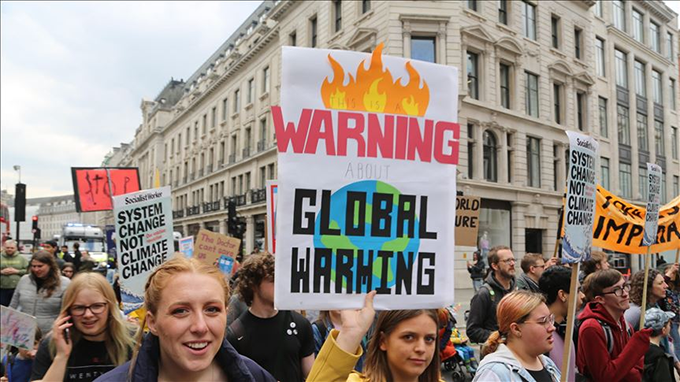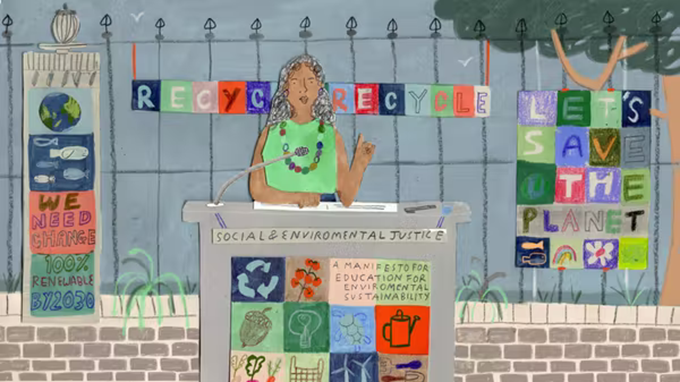
The UK government has introduced a new sustainability and climate change strategy for schools. However, our research shows that it does not go far enough to meet what young people and teachers want.
Last year, together with colleagues, we conducted research with over 200 teachers, teacher educators (the people who train teachers) and young people aged 16-18 from the UK to understand how they wanted schools to tackle sustainability and climate change. Participants were recruited via email and Twitter.
Our research allows us to assess how far the government’s new strategy aligns with what teachers and young people want. Here are five key things that teachers, teacher educators and young people would like to see in schools – and how the government’s sustainability and climate change strategy matches up.
1. Sustainability education for all
Many teachers already provide opportunities for pupils to learn about sustainability, such as eco-clubs, recycling projects and sustainable fashion shows. However, this work is optional and tends to happen outside the curriculum, meaning that not all young people have opportunities to take part.
Teachers and young people in our research wanted environmental sustainability to feature across the curriculum, not just in geography (which not all students study after the age of 14) and science.

Art for the manifesto resulting from our research, by Maisy Summer. Author provided
The government’s strategy includes a new natural history GCSE, which will be taught from 2025. This will increase opportunities for young people to learn about the natural world and sustainability. However, this subject will be optional and so will not ensure that every young person has access to climate change and sustainability education, regardless of their age or subject choice.
The government’s new strategy does include other ways to learn about the environment. Pupils can take part in a climate leaders award, carrying out extra-curricular activities in connection with sustainability, but this is also optional. This means that environmental sustainability remains unlikely to be prioritised or to involve everyone.
2. Training for teachers
Teachers we spoke to wanted professional development opportunities so they could feel more confident teaching sustainability in the classroom. As one teacher said: “We can lack confidence because we are navigating this ourselves and do not feel like experts where we might in our subject.”
While the new strategy offers support for teachers through resources and training, there is no promise of time to access this, and there is no fundamental change to existing school or teacher education curriculums in England.
3. Put knowledge into action
Teachers and young people do not just want to pass on knowledge – they want to be able to make a difference. We heard that teachers and students wanted education to be more about critical thinking, data literacy, doing research, taking action and communicating and networking with others. As one young person said:
We should be taught about big business and corporations – what their impact actually is. A lot of greenwashing goes on with big companies making individuals feel as if they are solely responsible … Education should empower us to demand change and to demand the rights we should have.
The focus of the government’s strategy is on learning more about sustainability, climate change and the natural world, not empowering young people to act for the environment or challenging the root causes of climate change.
4. Make schools sustainable
Teachers and young people wanted greater attention to environmental sustainability in school operations, including handling of energy, waste, transport and food. There is currently little requirement for schools in England to learn about or act for environmental sustainability.
The government’s strategy focuses on net zero targets and promises action on waste by requiring schools to increase recycling and reduce landfill. It also promises at least four new low-carbon schools and one college.
In other aspects of school operations – food, transport and energy – there is encouragement and support in the strategy, which may or may not translate into action.
5. Make schools community hubs for climate action
Young people and teachers saw schools as community hubs where people from across different generations could take part in sustainability focused activities. They saw starting sustainability education with young children and incorporating this throughout their lives as vital.
Introducing the climate leaders award provides a way for the contribution young people are already making to environmental sustainability in schools and communities to be recognised and valued. The young people we worked with called for such a scheme and wanted it at no cost. However, the description of the climate leaders award in the government’s sustainability and climate change strategy references existing awards such as the Duke of Edinburgh’s award, which is not free of charge.
Teachers and young people told us that at present, there is little support for environmental sustainability in education. The government’s new strategy does little to change this status quo.
We need further change to put sustainability and climate change at the heart of education. This could be done by climate change and sustainability into the core curriculum, making it part of exam specifications and school inspections and part of the core framework for teacher training – in other words, the things that teachers must prioritise.
Author Bios: Elizabeth Rushton is Associate Professor of Education at UCL and Lynda Dunlop is Senior Lecturer in Science Education at the University of York
